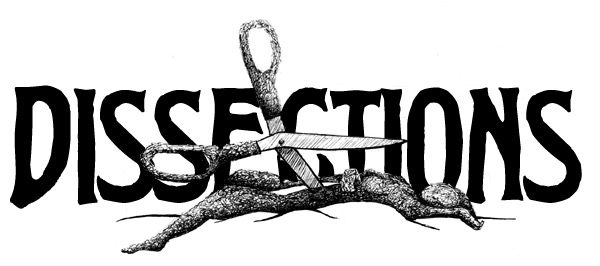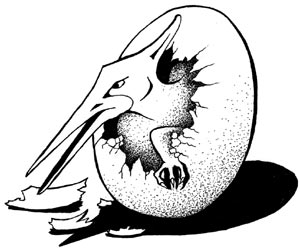[an error occurred while processing this directive]


Book Review
Regina Hansen (June 2021) The Coming Storm. Athenaeum Press
(an imprint of Simon & Schuster Children’s Publishing Division,
New York)
Gina Wisker
I have had the privilege of listening to extracts of this sensitive, occasionally disturbing, well-researched and beautifully written historical ghost story aimed initially or mainly it seems for a young YA readership.
It starts with a saying from Regina Hansen’s homeland: ‘Go to war, pray once. Go to sea, pray twice. —Prince Edward Island saying’, and war, the sea, Irish heritage and history are intertwined as we move between time zones 1900, 1918, 1949 and the 1950s, making links,
It starts in an excited rush, with ‘Beet’(Beatrice) the narrator being woken up because her cousin’s partner’s baby is coming. We are told the gossipy background to this, that the cousin Gerry is off catching cod, all in the lively voice of an insider. ‘Deirdre’s my cousin Gerry Campbell’s girl, and notice I didn’t say wife.’ She rushes through her memories of Gerry taking her to hear music, the constant liveliness in the house, and the Irish lilt comes out in Beatrice Mary’s voice as she tells us. But the joy of the arrival and then of another sudden timely surprising arrival home, of Gerry, is sliced clean through. This is not just a book about family life many years ago, with the hustle and bustle and the insider gossip, the lovely rendering of the memories of evenings full of music in a loving, sometimes a little divided, family, and the surroundings, the light across the water. It is also a ghost story, one of the terrible interruptions into everyday life and the longing returns. Gerry comes back for the birth of his child, it seems, but he is wet, and friends with him are wet, and he surprisingly incongruously for the moment carries his fiddle. As they stand, a fence between them and Beet, it is was a lifetime between all in fact, since they are drowned, lost and gone, except in this precious moment of a return just out of time.
As the three young men reach the fence, ‘Gerry lowers the fiddle, and all three men stand still on the other side, looking at me with great hollow eyes. The air smells rotten-sweet, like flowers left too long in a vase. Now I know for sure what I should have guessed when I first smelled the roses out of season, what my heart knew before my head did, the moment I saw Gerry walking over the bank. We stand there for a while just looking at one another as a gust of salt air lets me know the tide is turning, coming in. The cold, dark feeling is spreading through my whole self now. I feel my lip trembling like a little kid’s. “Oh, Gerry,” I whisper, as tears fill my eyes. “Oh, no”’ (p.6).
You will have to read on now of course, it is too immediate and good an opening sequence, but at the Words and Worlds readings at the International Conference for the Fantastic in the Arts when Regina revealed her developing book bit by bit for us, we were already enthralled by other glimpses of it before reading the opening pages.
The novel follows different generations of a family and
there is always a mix of joyful and dark, threatening moments, people
who might ostensibly seem kindly who are not, and secrets hidden from
others. In another time little Joseph has been taken upon a hillside
by the extremely worrying Marina Shaw. We know she is worrying because
of her smile, her ephemerality in places and her cold intent, which
is covered by overt friendliness with a hint of critique. Asking where
Joseph had gone: ‘“I brought him,” Marina Shaw says,
in a voice so flat calm it doesn’t seem possible she could sing
a note of that strange music I heard the other night. It’s an
edgeless voice, the way her face and body seem to have no edges, only
blurred lines like in old photographs. “I saw him from the window,
toddling along all by himself, climbing up the bank. I was afraid he’d
fall, what with no one watching him.” As she says this last bit,
she looks at Deirdre and parts those soft red lips in a smile. Even
Marina Shaw’s teeth are small and creamy white, almost baby’s
teeth.’ This is a dangerous woman (p. 61). She worries Lily Solomon,
and does not really remind of the dead Sarah. Meanwhile, the house Marina
lives in is Sarah’s, with her furniture: ‘Clean as a satin-lined
coffin’.
We are concerned about this woman, but later in the novel in the 1950s,
we realise a little of why. This is not just family likenesses travelling
through time, as they do, in this family-centred novel tracking the
births, deaths, hopes and losses of a family, but it is also about hauntings,
of figures through generations, some from myth, and of events. Marina
is certainly as worrying as she first seemed .
There are ghosts in this novel, and the constant presence of past relations, histories untold, secrets like layers of memory, soil, owned objects in an old family home.
It is also a tale about a moment or moments in history, not just of the dangers of working the sea, but of the loss of lives in the war. And Lily, who runs a local shop, observes the survivors return, damaged, like their minds and bodies, but not their uniforms. ‘There are soldiers, too. Young soldiers are coming back from the Great War still raging on in Europe. The boys, because that’s what most of them are, are rarely in one piece as she sees them walking by. Some are missing a leg, limping along on a wooden one; others are wrapped in bandages to hide their ruined faces. Their uniforms are clean, though’ (p. 73).
Regina tells a fascinating tale, which I won’t spoil by revealing much more of it. The characters are richly described, alive (unless they are of course dead, and revisiting…), the lilt of their voices, their gossip and music culturally rich. It is well researched historically and, as you want with a good novel, there are trails of, hints of secrets and unguessable truths, and moments of sudden shock and revelation. It moves around in time to reveal origins, so there are also moments in 1900 and back in old Ireland, where in one terrifying moment a kelpie, a water horse, takes hold of Morag and almost drowns her: ‘Morag tries to dig her feet into the river bottom, to stay put, but she can’t find any purchase. She lifts one leg to kick the creature away as its body elongates, serpent like, its eyes deepening to red, its teeth getting longer, longer. Now her skirts are caught, glued to the kelpie’s black scales. She is screaming, calling to her mother, to God, to anyone. “Please, please help me!”’ (p. 227).
Folk creatures, ghosts, rivers and the sea, relived moments
and revenants are part of the texture of the whole, with richly imagined
moments of danger and family closeness, and deep family secrets, some
revealed and some withheld. This might be originally for teenagers but
like work by Suzy McKee Charnas, and Holly Black, whatever age you are
you will be caught like Morag’s skirts in the kelpie’s scales,
and have to read it to the end.
Home
